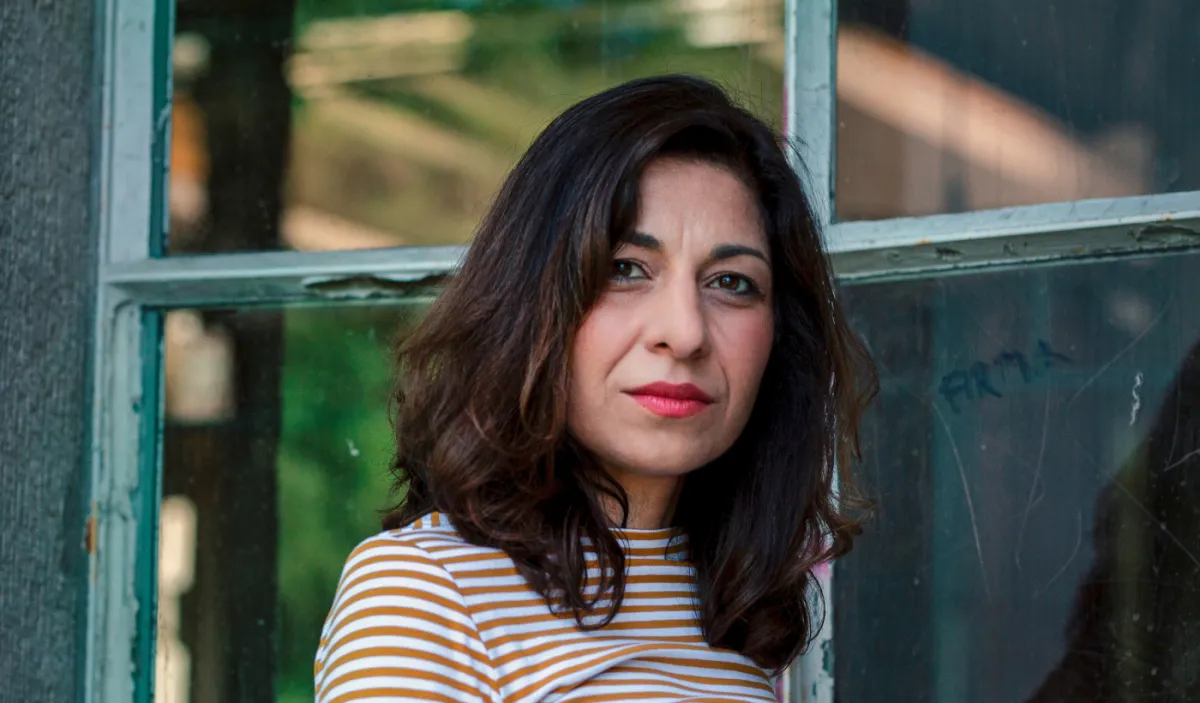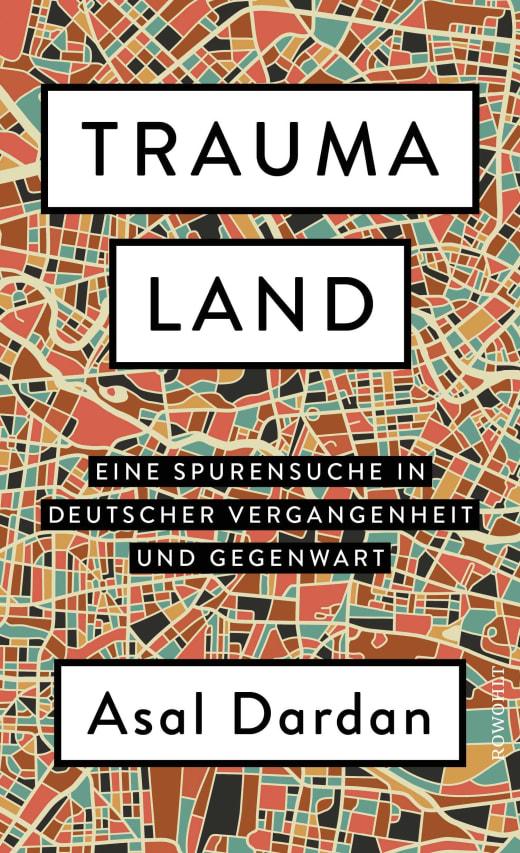Traumaland is everywhere

 Rowohlt
RowohltAsal Dardan | Trauma- land | Rowohlt | 288 Seiten | 24 EUR
Asal Dardan, born in Tehran in 1978, came to Germany with her parents when she was about a year old. She studied cultural studies and Middle Eastern studies and won the Caroline Schlegel Prize for Essay Writing in 2020 with her text New Years. In 2021, she published her essay collection Betrachtungen einer Barbarin, in which she reflects on her experience as a migrant.
Her new book Traumaland was published on January 28. 2025 In it, the author dissects the culture of remembrance, or even the deliberate forgetting, of the extermination of Jews during the Nazi dictatorship, as well as the numerous murders of migrants in Germany, especially after reunification in 1990. She opposes forgetting and also refuses to allow the individuality of victims of violent crime - be they migrants after the Second World War or Jews during the Nazi dictatorship - to be diluted in abstract contexts to such an extent that almost nothing remains of the people themselves. She searches for patterns and causes in what happened and questions the forms of public remembrance. I use the phrase 'extermination of the Jews' and not 'Holocaust' because the latter immediately creates a language barrier in German that pushes the unbearable and the responsibility for it a little further away.
For the most part, I agree with her, but occasionally she only sees what she wants to see and not the reality. More on that later. Using Germany as an example, Asal Dardan asks herself many questions about how we can endure this violent world (it's not just Germany; violence is currently increasing everywhere at an alarming rate) and how we should remember the victims. My impression is that she is grasping, researching, processing her own knowledge outwardly for the reader, but also inwardly, into her own self, in order to be able to withstand the knowledge she has acquired and the experiences she has had.
When I started reading the book, I remembered a shocking moment that I had experienced as an assistant to a Green MP in the Bavarian state parliament. I went into the parliamentary group's press office - it may have been 1998 - and saw a large poster on the door with the names of over a hundred migrants killed in Germany. I had never before come face to face with the facts so starkly. I stood motionless as if struck by a blow.
Asal Dardan starts with a prologue. It begins with the sentence "Unable to wipe away the blood, unable to erase the fact that it flowed." And this first paragraph ends: "I walk up and down in time, looking for the trail of red. I wonder, what goes beyond the accusation, what comes after it?" There is no definitive answer; each reader must search for themselves. But the author gives us plenty of help in this search beyond facts. The book is a veritable treasure trove, peppered with quotes and references to other authors who have dealt with the subject (in the broadest sense). Here, the reader interested in the extermination of the Jews and violence against migrants will find anyone and everyone who has said clever things about it. There was only one book I noticed missing: "Mass and Power" by Elias Canetti. Like Asal Dardan, this winner of the Nobel Prize for Literature wrote in German, although it was not his mother tongue.
The first and probably longest chapter, entitled "Berlin" (unfortunately there is no table of contents), is about how remembrance is staged in public spaces and how people (we, me, the author) deal with it. The Stolpersteine, which commemorate Jewish people, were first laid in Berlin and are now found across many German cities. Asal Dardan is particularly interested in them, as she encounters them at every turn in the city where she lives. She quotes Hannah Arendt (whose German citizenship was revoked in 1937), who said that the personal problem of the persecution of the Jews was primarily not what the enemies did, but what the friends did. The same applies to the attacks and manhunts on Mozambican contract workers, originally recruited by communist Esat Germany, and their families in 1991 in Hoyerswerda (see also the review Language is also a weapon).
She questions herself because she cannot understand how human beings can come to deny others their humanity in such a way that they are classified as sub-human or ultimately deprived of their humanity altogether (see also the review Slavery is not in the world, it is in us).
From the second chapter, "Cologne", the city in which the author grew up, the book focuses increasingly on the fates of migrants. The fact that the author has a grasp on several cultural spaces is, in addition to her intellectual curiosity, in my opinion a major asset of her reading of Germany past and present. In my view, you only really get to know your own country once you have left it for an extended period of time. For me, I was the head of a handloom weavers' cooperative in rural Chad from January 1985 to June 1987, and since 2005, I have been living in Brussels with my second wife.
Asal Dardan comes from Mauritius. In 2000, an ophthalmologist in Munich, with whom she had been working in complete confidence in a retirement home, diagnosed her with cataracts, which lead to blindness if left untreated. He then went on to say that "People of Colour" (the doctor used the "N-word", which was common in Bavaria at the time) were susceptible to this by nature and that she therefore didn't need medication. She experienced more racism in four weeks in Munich in 1996 than in ten years in Stuttgart. Why am I telling you this? Firstly, because one's view of reality becomes more refined when you have knowledge of more than just your own country, and secondly because I can confirm from my own experience what she describes and analyses.
The chapter "Dessau" explores what it means to inhabit a threatened body. Three terrible murders were committed in this city. In one case, it is likely that one or more police officers were the perpetrator(s). As in the chapter "Cologne", in which the murders of the National Socialist Underground (NSU) are mentioned, we learn once again how those who are supposed to guarantee protection and security on behalf of the state so often fail - either to protect, to clearly investigate or to punish assaults and even murder.
I was amazed when I read the last chapter, "Hoyerswerda". I had expected it to be about the aforementioned racist attacks in this town in 1991. At ther time,I was studying history in Heidelberg. By chance, I was hired as a sound recordist by a freelance cameraman who was interviewing residents in Hoyerswerda about the riots, in order to generate clips for a current affairs program on German public television (ARD). Two thirds of the people interviewed shamelessly supported the riots, without the slightest hint of a sense of injustice.
Hoyerswerda", however, is primarily about the children's book Krabat, written by Otfried Preußler and set in the area around Hoyerswerda. If I have understood her correctly, the author is trying to demonstrate, through this text, that all German children were brought up in the National Socialist tradition, both during the dictatorship and for a long time afterwards. This was certainly true for kindergartens and schools during the dictatorship, but was by no means the educational method followed by all parents. She mentions, not for the first time, "black pedagogy". On this point, I think she is wrong. According to Wikipedia, the concept of "black pedagogy" (I wasn't even aware of the term) is strongly contested in the pedagogical world. It is said to be a model of parenting where children are trained to be totally submissive to parental authority. There may be a few psychologically unbalanced parents who act in this way, but it seems incomprehensible to me that this should be presented as a general pattern in Germany. It is an example of how, as I said at the beginning, Asal Dardan sometimes sees what she wants to see.
She also makes a historical error. The story of the orphan Krabat, who falls into the mill of a witch master as an apprentice, is not set in the Thirty Years' War (17th century), as she says several times and also uses for her argument, but in the Great Northern War (18th century), at the end of which the rise of Russia begins with Peter the Great's victory over the Swedes at Poltava. Augustus the Strong, Elector of Saxony and also King of Poland, takes part in this war with his territories. The second siege of Vienna by the Turks also appears in the book, as the warlock tells the miller a story from his youth, which takes place in the camp of the Turkish army outside Vienna. In the book, Augustus the Strong (the name is not mentioned in the story) visits the mill by chance and rips apart a horseshoe as proof of his strength.
Krabat is a story in which evil is conquered through love. After Krabat is freed by "his" girl, the sorcerer must die and the millers lose their magic powers. The pair leave the mill together. Snow falls "like flour". This is the last sentence of the book. From this, the author construes that the flour symbolises the human bone meal that the miller's boys had to grind for the devil once a month, whether they wanted to or not. As I said, I can't follow her argument on this point.
At one point, the author questions the relevance of continuing to address Germany's history of violence. She is probably alluding to the global situation, which is marked by more frequent wars, and perhaps also to the increasing acts of violence committed by migrants in Germany. Yet Traumaland is an important book. Simply because it is vital to always look at your country's history. Every country should do this, but not all states or individuals are capable of it. I also sometimes found it difficult to read "Traumaland", as I still can't even watch the movie "Schindler's List" because I dealt so intensively with the extermination of the Jews in my youth and young adulthood that I am no longer emotionally capable of doing so. But I am grateful to the author for her compilation of numerous facts about violence against migrants in Germany and her reflection on why it could come to this.
We Germans have always been considered particularly thorough worldwide. We were also thorough when it came to evil, which exists everywhere. It was Germans who industrially exploited people for the first time. My mother, whose best friend at school was Jewish and who suddenly disappeared overnight, freaked out when I asked her as a 17-year-old: "Did you know that the soap you used was made from Jews?" This really did happen. But we never want to become world champions like that again.



